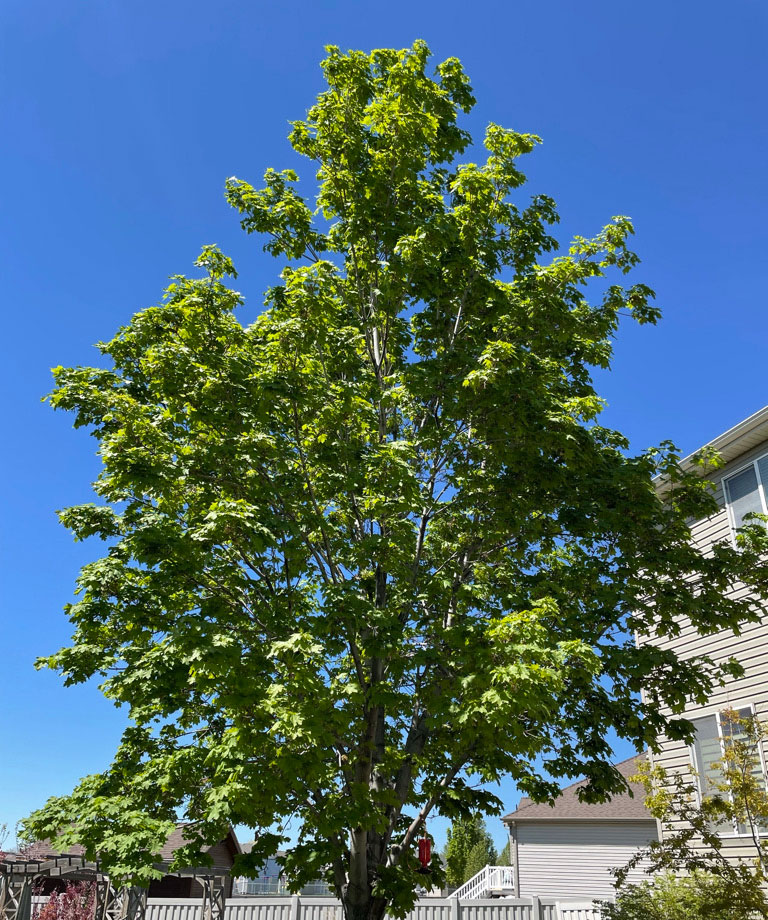Tall, bushy, and luxurious trees can take any landscape up a notch. Imagine opening your windows to a lush green view every morning!
The perks don’t end there. Aesthetics aside, trees also:
- Improve the air quality around your home
- Provide shade
- Protect your home from wind damage
- Keep your home hidden from prying eyes
- Prevent soil erosion caused by rain runoff
But what happens when you plant a tree and it simply refuses to grow? Or, what if you moved to a new home with a bare lawn and decided to plant a new garden?
Trees may be the most natural way to spruce up a backyard, but they certainly are not the fastest. Like most homeowners, you probably don’t want to wait decades before your trees reach a decent height. And, while growth rates differ from species to species, there are several ways to speed things along.
Ready to know how?
Here are 6 Top Tips to Promote Rapid Tree Growth:
1. Choose the Right Species
If you’re planning to plant trees from scratch, the first vital thing is to pick the right species. Typically, this depends on:
- The climate you’re living in
- The type of soil
- The aesthetics you’re seeking
- The tree’s growth rate
For example, a few popular varieties well-suited to the growing conditions of Northern Utah are:
- Red Maple: A favorite for Northern Utah landscapes, red maple can grow up to 13 inches to more than 24 inches per year. Furthermore, it can tolerate multiple soil conditions.
- Hybrid Poplar: Hybrid poplars top the charts for attractive, fast-growing shade trees. These beauties have an annual growth capacity of up to eight feet, and can quickly turn your backyard into a shadowy haven.
- Sawtooth Oak: Looking to increase your curb appeal? Try the sawtooth oak on for size. Not only does it have a growth rate of one to two feet per year, but its wide-spreading foliage is a sight to behold.
- Japanese Zelkova: Zelkovas are well-adapted to city conditions and offer a fair amount of shade for their size. However, they are most renowned for their vibrant fall colors.
2. Test Your Soil
Generally speaking, a soil test checks for two things- pH levels and available nutrients. Here’s how understanding these things can help you in the long haul.
When the soil’s pH is too low or too high, the trees are unable to absorb the nutrients present in it. You need a soil test to pinpoint exactly how to balance out the pH level. That way, you won’t have to play guessing games to discover why your plants aren’t growing.
Besides pH, soil tests also identify available nutrients – or the lack thereof. Knowing what nutrients your soil needs will allow you to choose a fertilizer that fills the gaps.
3. Ensure Your Trees Have Space
Sure, there’s no denying the aesthetic appeal of densely populated trees. But remember, trees need ample space to grow and thrive. Proper spacing is critical to:
- Healthy root and canopy development
- Nutrient absorption
- Reduced competition with other trees and shrubs
- Increased protection against dangerous pests
Not sure how much room to leave between adjacent trees? Qualified arborists recommend looking at the final size of the trees before planting them. Doing so will help you decide their location. A good rule of thumb is to place your trees at least three feet apart.
While planting trees, be sure to take landscape elements such as retaining walls and utility walls into account. You don’t want them to damage your property in any way.
4. Water Your Trees Enough
As obvious as this may seem, providing your trees with adequate amounts of water can make a significant difference in their size. Without enough moisture, chances are your trees will become stunted.
That said, you must be careful not to drown your trees. Excess water can effectively kill them by cutting off the air supply to the roots.
It’s best to use a slow irrigation system to give your tree roots just the right amount of water. The trick is to ensure the soil is damp but not soggy.
In case you’re unsure how much water your trees need, feel free to reach out to the tree care services professionals at Utah Tree Co. We’ll be happy to answer your questions!
5. Add a Layer of Mulch Around the Trees
Spreading a layer of mulch around your trees can support its growth big time. Not only does mulch improve water retention, but it also adds nutrients to the soil. Moreover, it keeps weeds at bay and prevents them from feeding off your plant.
A word of caution though. We suggest you make the mulch layer only 1-2 inches thick to avoid smothering the root system. Also, place it a small distance away from the tree trunk. This way, there’s a lesser risk of decay, rot, and eventually tree removal.
6. Prune Your Trees Periodically
Tree trimming and pruning stimulate growth, but only if done correctly. It is a great way to remove dead branches and allow room for new growth. Additionally, lopping off diseased and infected tree limbs safeguards the entire plant against a full-blown infestation.
Again, there’s a danger to over-pruning your trees. Over time, continued over-pruning may lead to weakened branches that cannot withstand winds or ice loads. Or, the plant may exhaust itself trying to replenish its canopy. For obvious reasons, this will affect its growth.
Tree pruning isn’t something you can master overnight. In case you haven’t done it before, we suggest you leave the job to a tree services company like us. We’ll know what and how much to remove from your trees to ensure they keep growing uninterrupted.
The Bottom Line
Large, full trees enhance the visual appeal of any landscape. But planting trees is one thing, caring for them is another. You’ll have to be vigilant about upkeep to help your trees mature quicker. Hopefully, this post has given you some insight into how to do this with ease.
At Utah Tree Co, we know you don’t cut corners with your trees’ health and well-being. That’s why we offer remarkable residential and commercial tree services to protect your precious plants all year round. Just give us a call, and we’ll arrive at your door straight away!

